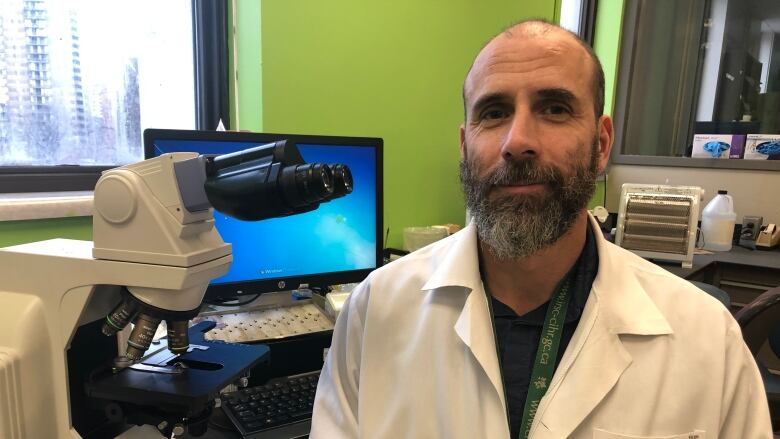The considerations that go into how and when to use rapid COVID-19 tests in N.S.
Province has 60,000 tests stockpiled, but still trying to determine best use

Like otherjurisdictions, Nova Scotia is considering all of its options when it comes to managing COVID-19. That includes testing. The province currently has 60,000 rapid antigen tests stockpiled, but officials are still trying to determine how best to use them. The testshave limitations, including only being approved for people who are symptomatic.
Dr. Todd Hatchette,service chief for microbiology in the Nova Scotia Health Authority's Central Zone, spoke with CBC News about the considerations that go into deciding how and when to use the tests.
Thisinterview has been edited for clarity and length.
Tell me about the balance between, on the one hand wanting to be able to do something very quickly,andon the other hand, wanting to know that you can trust the results of that test.
The rapid test, the advantage isit takes 15 minutes to get a result. The problem with themis that the accuracy is lower. So 70-80 per cent sensitivity, meaning there is an increased risk for a false negative test. So it really depends on what your risk tolerance is. In our situation, we have the lowest rates of infection almost anywhere in the world, so it's really important that we detect every infection that comes in to try and keep that infection rate down.
Can you give me a sense of what ultimately it is you and your colleagues are looking at,as you weigh whether or not this is something that you want to incorporate into your workflow?
We have to look at it from a number of perspectives.
Can it be implemented in the current PACs [primary assessment centres]? That'll increase the amount of time that people have to deal with individual patients. It slows down the overall process. You'll have to look at the sensitivity and specificity. So if you look at the accuracy of the test, are you willing to tolerate missing 20 per cent of people? Is there a population where that's OK? And there may bedepending on how we think about our risk tolerance. One of the things that can kind of overcome this low sensitivity is repeat testing. Unfortunately, the challenge there is it's the NP [nasopharyngeal] swabthat these are approved for. So that's that deep nasal swab that's uncomfortable. Soif you were to, say, repeat test every three days, that's more uncomfortable so more people would probably be less likely to do that.
Would part of the consideration be that because we have so few cases, that perhaps we have the luxury of being able to wait a couple of days to get a result back, whereas other provinces are just being overwhelmed with case numbers?
One of the places that these tests are being used across the country is to supplement testing that is occurring in labs like this. So if your capacity in those labs gets overwhelmed, we can use those rapid antigen tests on the same site to try and get a quicker positive result. All the negatives still need to be repeated because that sensitivity aspect and the potential for false negatives still exists. Across the countrywe're all trying to figure out how to use these tests. In places where the turnaround times are greater than 24-48 hours, it will add the advantage that you can pick up a positive quicker.... here we still have capacity, we still are able to meet those turnaround times, so one of the things we're going to do is make sure that we save enough of these tests in the event that we get a large outbreak that we can deploy them as necessary.
Some people have suggested that these tests could be a good solution for dealing with issues that we've seen at airports. Is that a practical option?
Not at this point. The challenge with these tests is the scalability. They're rapid, in that they take 15 minutes to get a result, but you need someone to take that specimen from that individual. If they wait for that result, that takes 15 minutes. Soyou can imaginewe've all gone through customsif 300 people show up all at once, you're going to need 150 people to clear that number of people in a 40-minute period.












_(720p).jpg)


 OFFICIAL HD MUSIC VIDEO.jpg)
.jpg)



























































































